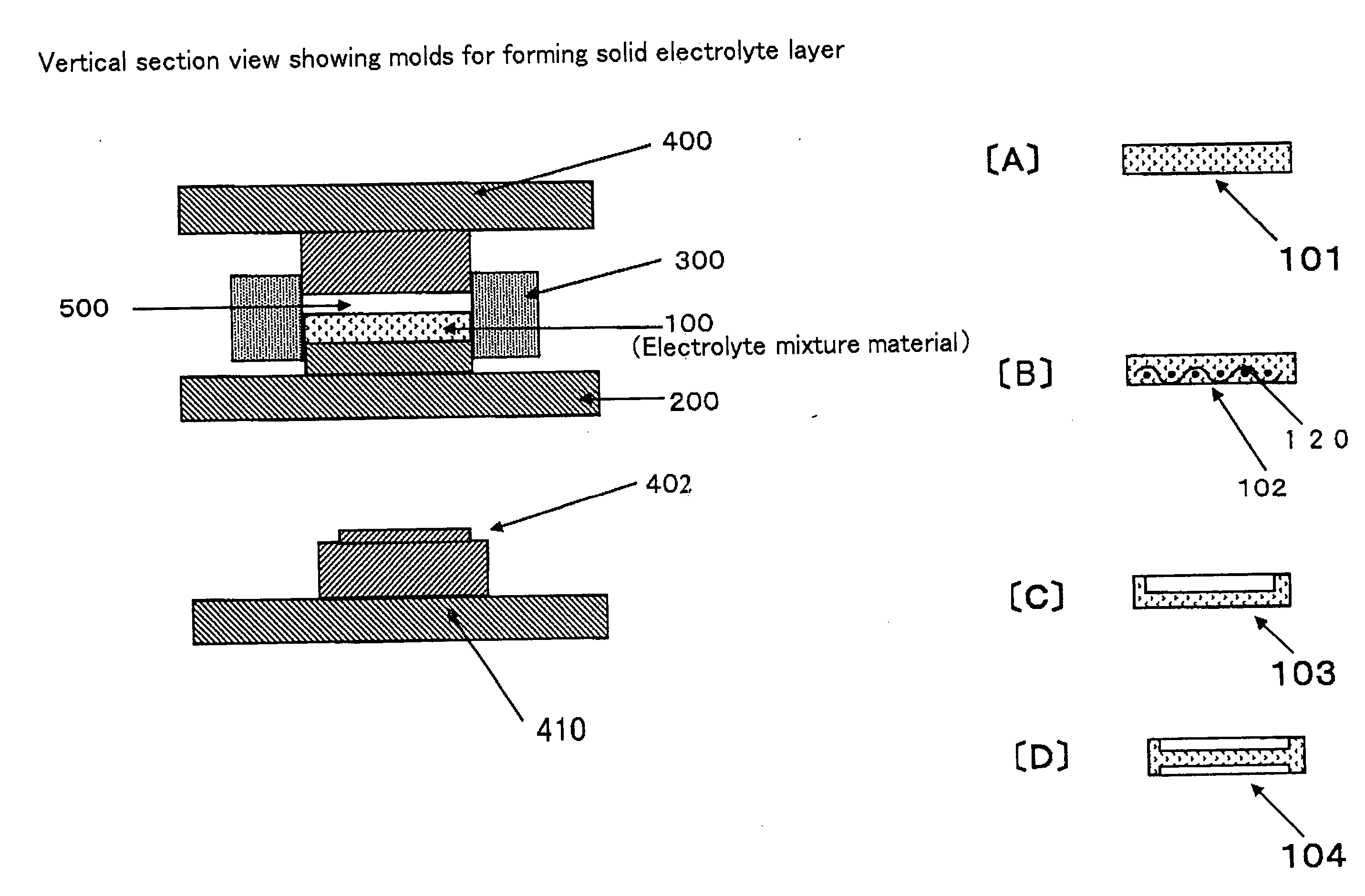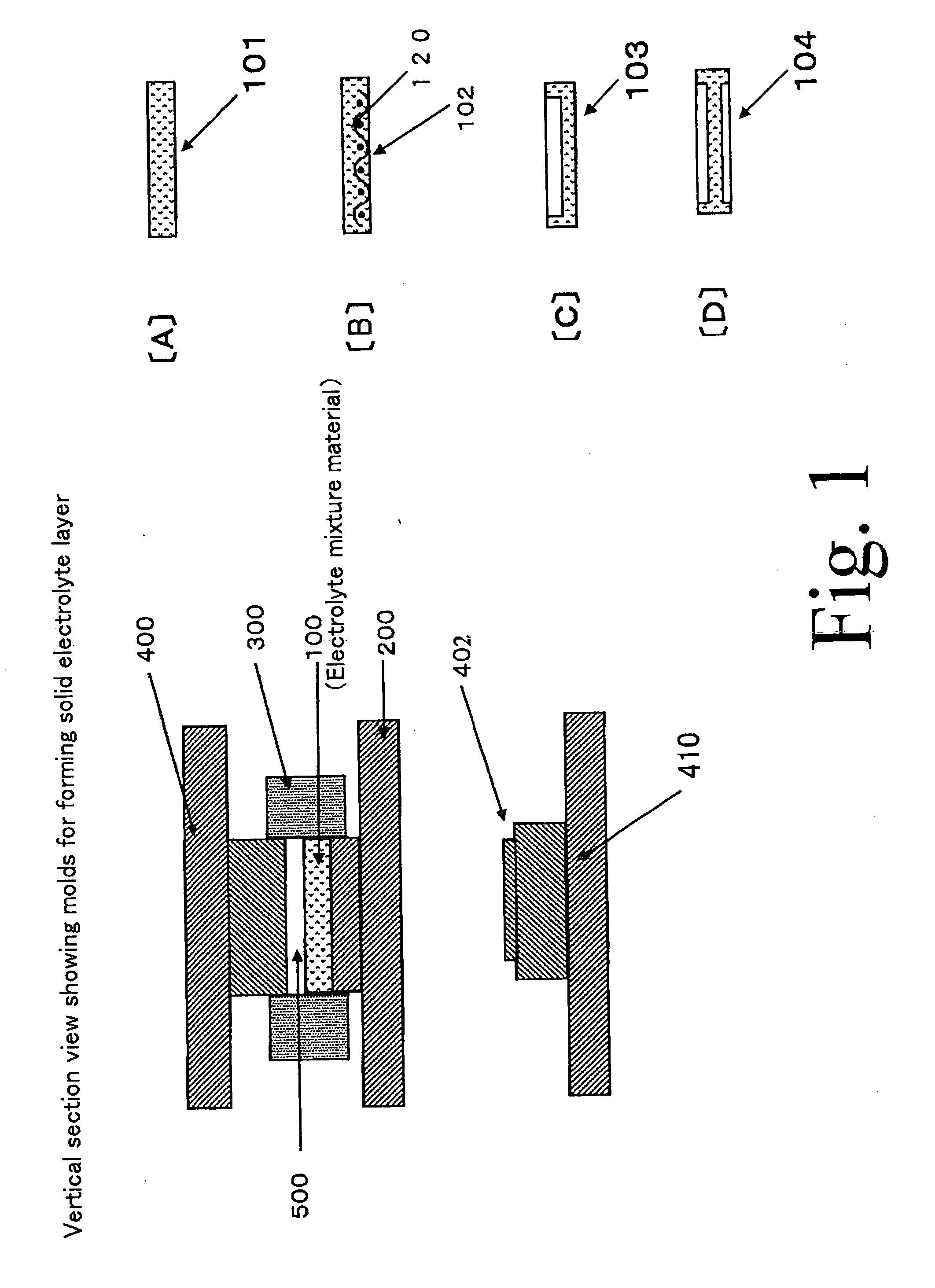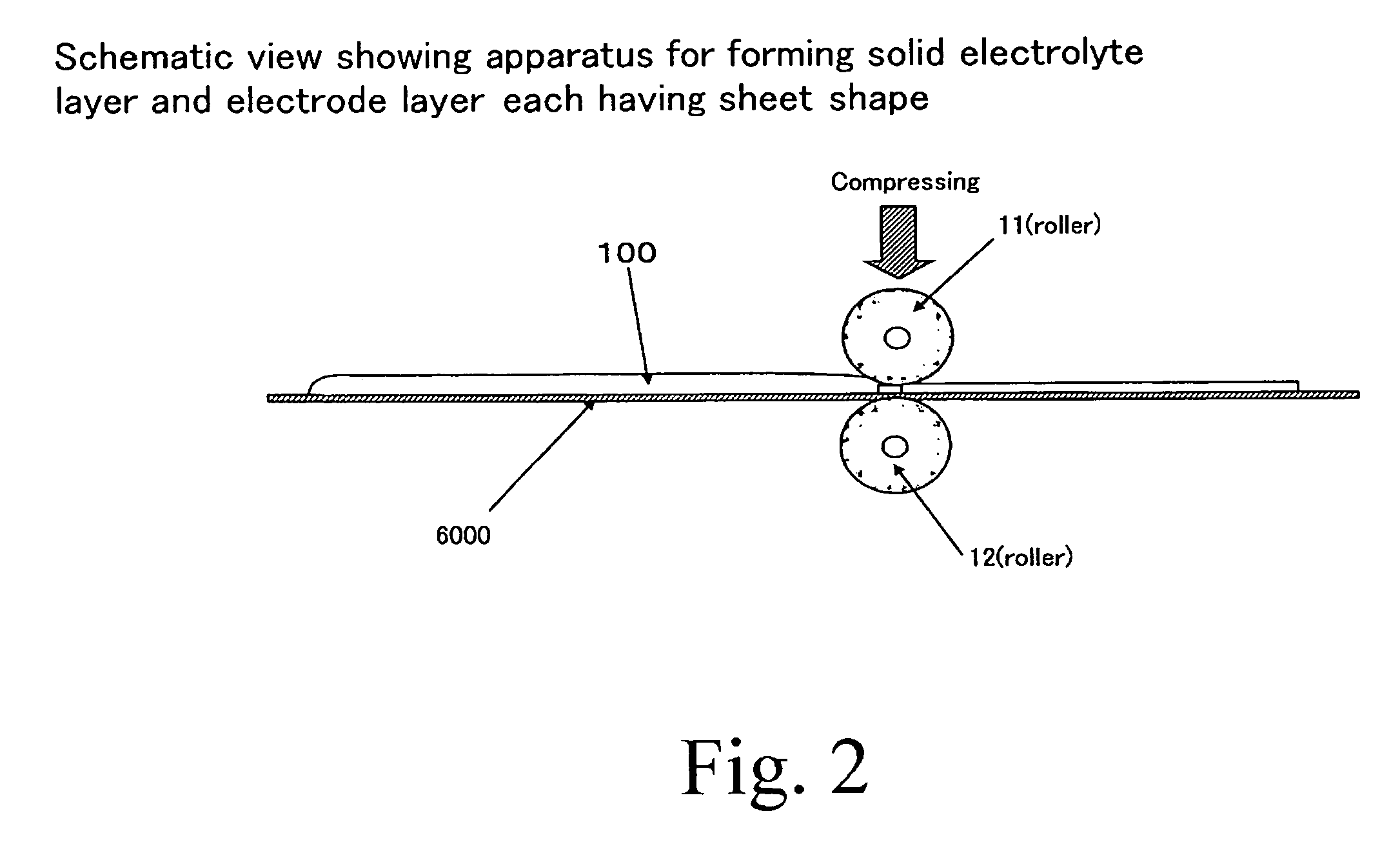Electrochemical device
a technology of electrochemical devices and active materials, applied in the direction of batteries, non-aqueous electrolyte cells, sustainable manufacturing/processing, etc., can solve the problems of increasing the danger of battery firing, unable to retain an electrode active material in the battery device, and unable to achieve the effect of excellent properties
- Summary
- Abstract
- Description
- Claims
- Application Information
AI Technical Summary
Benefits of technology
Problems solved by technology
Method used
Image
Examples
first embodiment
[0064] Formation of Solid Electrolyte Layer
[0065] Preparation of Binder Solution
[0066]Here, description will be made on preparation of a binder solution (an organic polymer solution) to be used for producing the binder particles in a dried state, each of the binder particles including the second particle (particulate structure) and the binder carried on at least a part of a surface thereof.
[0067]The binder solution is used for producing the binder particles in a dried state. Each of the binder particles includes the second particle and the binder carried on at least a part of a surface thereof. The binder solution is obtained by dissolving the binder composed of the organic polymer in an organic solvent.
[0068]The organic polymer is not particularly limited to a specific type, but examples of the organic polymer include styrene-based thermoplastic elastomer such as styrene-butadiene-styrene block copolymer, styrene-isoprene-styrene block copolymer or styrene-ethylene-butylene-styrene...
example 1
[0421]In this example 1, a solid electrolyte layer using electrolyte particles (first particles) made of a silver-ion-conducting solid electrolyte (a silver-ion conductor) will be described.
[0422]Iodinated silver tungstate (Ag6I4WO4) was used as the silver-ion-conducting solid electrolyte. The iodinated silver tungstate was received into an alumina pot and crushed using a planet ball milling machine with alumina balls to obtain a crushed matter.
[0423]This crushed matter was screened to obtain particles. Particles having a particle size of about 15 micrometers or less were utilized as the electrolyte particles (the first particles) to be used for forming the solid electrolyte layer.
[0424]On the other hand, particles having a particles size of about 15 micrometers or more were utilized as second particles to be used for carrying a binder composed of an organic polymer (that is, second particles to be used for producing binder particles).
[0425]Prior to producing the binder particles, f...
example 2
[0438]Although the styrene-butadiene-styrene block copolymer (SBR) was used as the binder in the Example 1, another organic polymers were used as the binder in this Example 2.
[0439]Namely, solid electrolyte layers were formed in the same manner as in the Example 1, except that the binder was changed from the styrene-butadiene-styrene block copolymer (SBR) to another organic polymers.
[0440]Specifically, as the organic polymers other than the styrene-butadiene-styrene block copolymer, styrene-isoprene-styrene block copolymer (SIS), styrene-ethylene-butylene-styrene block copolymer (SEBS) and hot-melt resin were used, respectively.
[0441]Various binder particles were produced using the above organic polymers, and toluene as an organic solvent to be utilized for dissolving the organic polymers according to the steps and described in the above embodiment.
[0442]Thereafter, various electrolyte mixture materials were prepared using the thus produced binder particles. In this regard, it is ...
PUM
 Login to View More
Login to View More Abstract
Description
Claims
Application Information
 Login to View More
Login to View More - R&D
- Intellectual Property
- Life Sciences
- Materials
- Tech Scout
- Unparalleled Data Quality
- Higher Quality Content
- 60% Fewer Hallucinations
Browse by: Latest US Patents, China's latest patents, Technical Efficacy Thesaurus, Application Domain, Technology Topic, Popular Technical Reports.
© 2025 PatSnap. All rights reserved.Legal|Privacy policy|Modern Slavery Act Transparency Statement|Sitemap|About US| Contact US: help@patsnap.com



